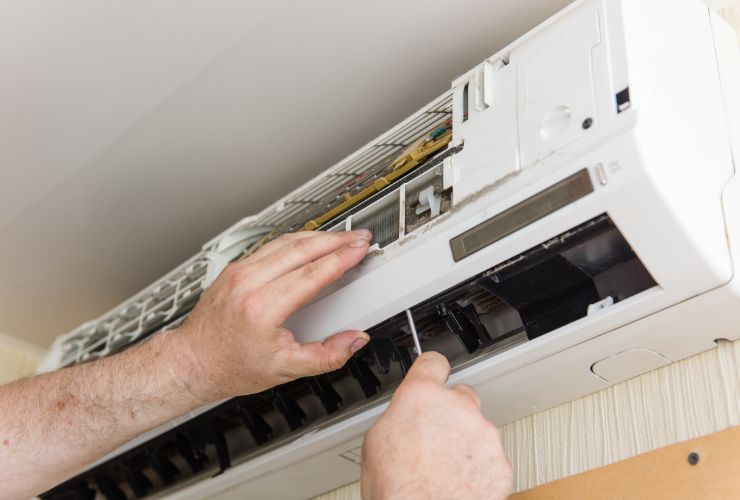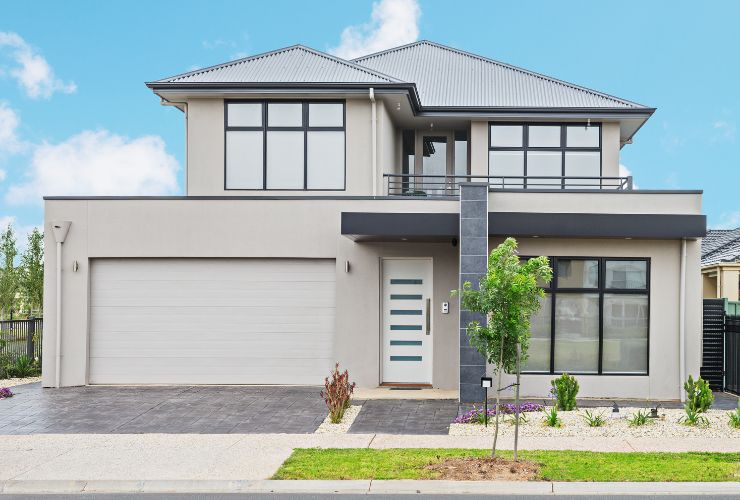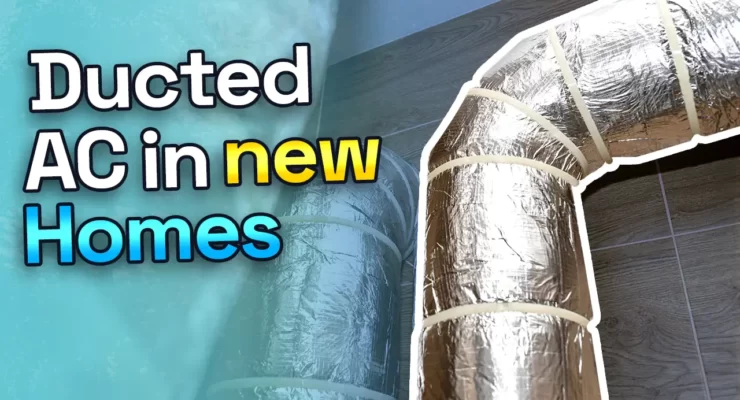Fast read
If you were looking to install ducted air conditioning during home construction, then that's a good idea. The process of installation depends on the type of home being built, whether it's a single-story or two-story home.
If you are opting to construct a single-story home, a ducted air conditioning system is a viable option, with the main factor influencing the installation being the angle of the roof and the roof cavity space. With the optimal angle of the roof being 25-30 degrees, the smaller the angle the more difficult it will be to install.
For a multi-story building, it is harder to install because the ducted air conditioning system must be installed on every level. It is advised to make sure that all builders and contractors are on the same page so that nothing is missed during construction.
Is it smart to get ducted air conditioning installed during the construction of my home?
If you are building your home, installing your ducted air conditioning system during construction is a good option. We will here explain what this process will involve for both single and two-storey homes.
Installing ducted air conditioning while building your home is advisable. One of the reasons is that modern ducted units can be efficient and only heat the chosen zones of a home, allowing you to heat and cool only the area occupied.
With the strong drive towards the electrification of homes and out of gas to reduce the burning of fossil fuels, an efficient ducted air conditioning system can be the energy heart of a home. Heating in winter removes the need for gas, but with hotter summers predicted, it will also be able to make your home comfortable.
If electricity generated via coal powers the air conditioning, we continue to burn fossil fuels for our comfort, highlighting the need for improvement in the planet’s situation.
What to consider for your ducted air conditioning system
There are two primary phases to consider when installing ducted air conditioning in a newly constructed home. Installing a new air conditioner in a newly built house takes longer because installers need to visit the property multiple times during various stages of construction. Most air conditioner installation businesses work with the builder and/or the client to coordinate the installation of ducted air conditioning during construction.
Energy efficiency
When installing ducted air conditioning in your new house, energy efficiency is a crucial factor to consider. You may assist in cutting your energy costs and carbon footprint by choosing an energy-efficient ducted system. So when purchasing the unit, ask about the Energy Star rating, overall consumption, and noise levels.
Your HVAC specialist can assist you in choosing a system that satisfies your energy needs and financial realities while also delivering optimal energy efficiency. Two examples of energy-efficient solutions are plans with high SEER (Seasonal Energy Efficiency Ratio) ratings and variable speed motors.

Planning
Careful planning and design are essential when installing ducted air conditioning during construction. Your HVAC contractor will need to collaborate with the builder of your home and plan the ducting layout, considering where walls will be placed ceiling heights, and other structural components.
Proactively scheduling the installation timetable is crucial because the ducting requires placement before finishing the walls and ceilings. You can request a thorough schedule and plan for the installation process from your HVAC contractor.
Maintenance
Your ducted air conditioning system must be appropriately maintained and cared for to function effectively. Your HVAC contractor may offer you a maintenance schedule and strategy to help you ensure your system remains in excellent shape for many years. The poorly maintained systems can also use more energy and malfunction because of clogged inlet filters and blocked drain lines.
Cleaning the ducting, replacing the air filters after a few years, and checking the system for damage are all examples of routine maintenance. You can help your system last longer and avoid expensive future repairs by regular maintenance.
Single storey homes
The main factor affecting the installation of a ducted air conditioning system in a single-storey home is the roof pitch angle. If your home has a roof pitch between 25 and 30 degrees, then the installer will have no issue with roof access and running the ducts in the ceiling. This even applies to retrofits to existing homes.
If your roof pitch is lower than this, the process will become more complicated but possible. The lower rise means less space for everything with the ducted air conditioning system, such as the duct itself, wiring and the plenums. Again, this does not make the process impossible, but it may take longer than if the pitch was higher.

Make sure you allow future access
The second most important consideration is access to the ducted air conditioning system for warranty claims, repairs and returns. If there is an issue and someone needs to check the system, they need to be able to get to it. To prevent this issue, ensure the installer and other builders communicate to make an appropriate access plan when installing the system.
Plastering the ceiling later and never reaching certain parts of the ducted air conditioning unit is pointless if you may need to access it one day. Pre-planning and clear communication with the builder is essential in this instance. If the roof pitch is shallow, some brands offer minimal ducted air conditioning systems that may help you in tight setups.
Older single-storey homes
A ducted air conditioning system installed in an older-style home with a pitched roof like in the photo above is a relatively straightforward affair, as long as access to the roof is available. The outdoor unit needs to be somewhere close to the power supply and then the indoor unit and ducting can be located within the roof.
Two storey home
If you are building a two-storey home, you want your ducted air conditioning system on both levels. In this case, you must find ‘voids’, also called ‘drop locations’. These refer to spots in the house where the duct can go from upstairs to downstairs, as the central air conditioner unit in such setups is often on the roof. Incorporate these locations strategically throughout the house in areas where you desire ducted air conditioning.
Before starting this process, your builder must plan the drop locations first. Usually, the builder will have the home designer add the areas to the plan, which may require changing. This will ensure changes are made throughout the building process, which can be costly.

Do not undersize your ducted air conditioning
One regular mistake to avoid is to undersize the air conditioning system. This means the ducted air conditioning unit chosen to run the system needs to be stronger or strong enough to heat or cool your entire home.
If the unit is just at its upper limit, it will have to work hard for more periods of the year, leading to increased wear and tear and “early retirement”. On the other hand, oversizing is also not recommended, as you waste money on capacity you do not need. Make sure you discuss this detail with your unit supplier and your own research.



